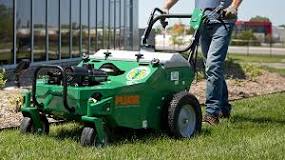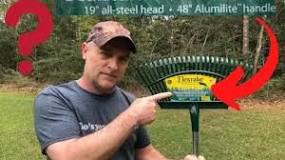So, will a power rake level your lawn? Yes, it can help level your lawn, but it’s not a magic solution. A power rake is great for removing thatch and debris, which can contribute to an uneven lawn. However, if you’re dealing with significant dips or bumps, you might need to do a bit more work.
What is a Power Rake?
A power rake is a machine that uses rotating tines to comb through the soil and remove thatch—those pesky layers of dead grass and organic material. It’s like giving your lawn a good combing! This process opens up the soil, allowing air, water, and nutrients to penetrate better.
How Does It Help with Leveling?
While a power rake isn’t primarily designed for leveling, it does play a role in the process. Here’s how:
Thatch Removal
Thatch can create an uneven surface. By using a power rake, you can eliminate this layer, which helps in smoothing out the lawn over time.
Soil Aeration
When the tines dig into the soil, they aerate it. This aeration allows for better root growth and can help fill in low spots as new grass grows back.
Preparation for Topdressing
After raking, many folks choose to topdress their lawn with soil or compost. This can further help level out any uneven areas while providing nutrients for your grass.
Limitations of Power Raking
While it’s handy, there are some things to keep in mind:
Not for Major Dips
If your lawn has major dips or mounds, a power rake alone won’t cut it. You might need to bring in some soil to fill those areas.
Timing Matters
Timing is everything! Power raking is best done during the growing season when your grass can recover quickly.
Conclusion
In summary, a power rake can be a useful tool in leveling your lawn by removing thatch and aerating the soil. However, for significant leveling needs, you’ll likely need to combine it with other methods like topdressing or filling in low spots with soil. So grab that power rake and get ready to give your lawn some love!
FAQ
Can I use a power rake on any type of grass?
Absolutely! Power rakes work on most grass types. Just make sure to adjust the settings according to your specific grass species to avoid damage.
How often should I power rake my lawn?
Typically, once or twice a year is enough. Spring and fall are great times since they align with the growing cycles of most grasses.
Is it safe for my existing grass?
Yes, as long as you’re not overly aggressive with the machine. Just be mindful of how deep you’re raking—too deep can harm healthy grass roots.
What should I do after power raking?
After you’ve raked, consider topdressing with compost or soil to fill in any low areas and provide nutrients for new growth.







